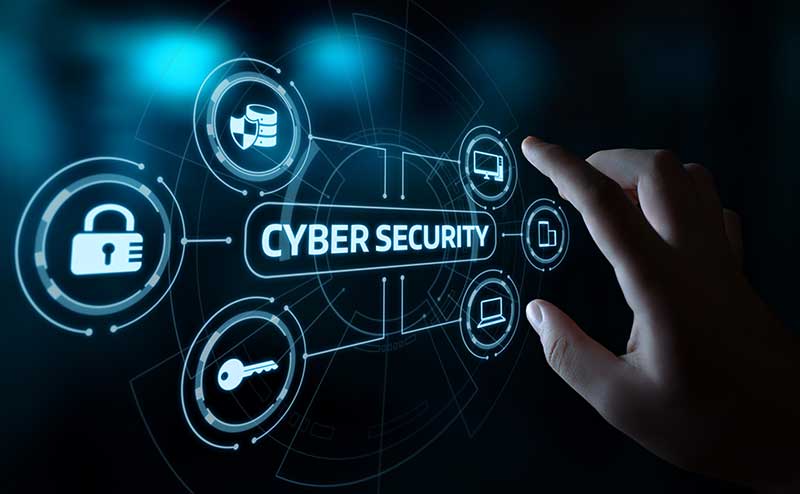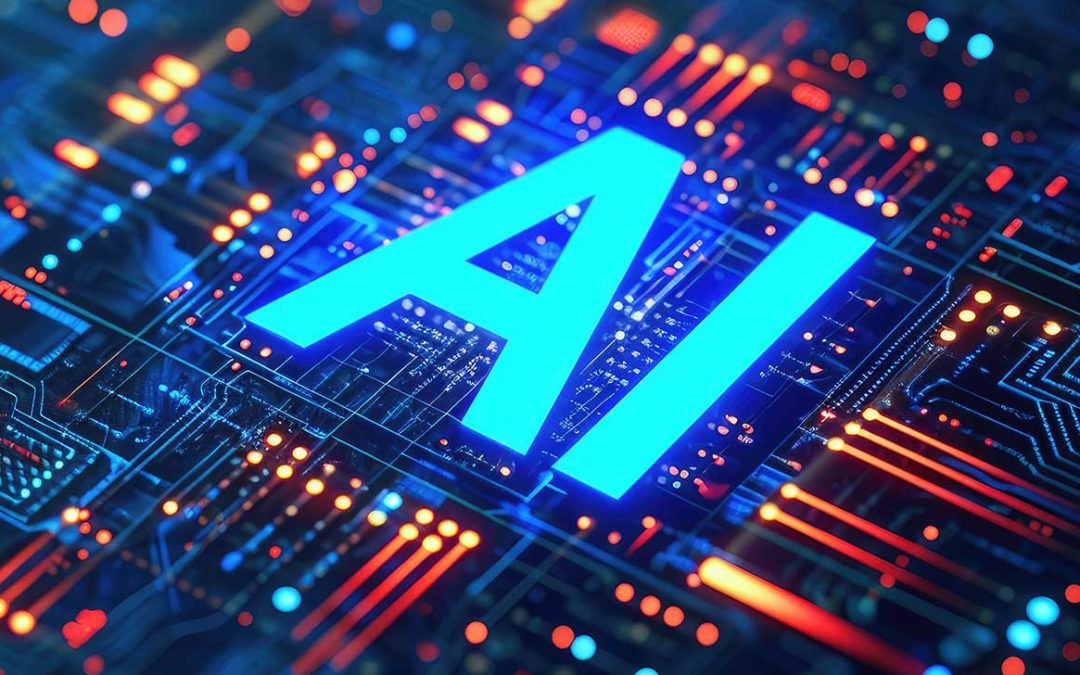1. Artificial Intelligence: Ubiquity in Automation and Decision Making
By 2025, artificial intelligence (AI) is expected to become ubiquitous in both automation and decision-making processes across various sectors. This pervasive integration of AI technologies is driven by advancements in computing power, algorithmic efficiency, and the growing availability of big data. As AI becomes more deeply embedded in the fabric of business operations and daily life, its influence on automation and decision-making will usher in significant changes:
Ubiquitous Automation
AI’s role in automation extends beyond routine tasks to more complex processes, reshaping industries by enhancing efficiency and enabling new levels of performance.
Industrial Automation: In manufacturing, AI-driven robots and automated systems will not only perform physical tasks but also make autonomous decisions based on real-time data analysis. This will lead to smarter production lines that can adjust operations on the fly to optimize output and reduce waste.
Smart Infrastructure: In urban planning and infrastructure management, AI will automate and optimize everything from traffic systems to energy grids. Smart traffic management systems will adjust signal timings and routes in real-time to minimize congestion. Similarly, smart grids will automatically balance energy distribution and integrate renewable sources effectively based on current demand and supply forecasts.
Autonomous Vehicles: AI will play a critical role in the automotive industry, particularly in the development and deployment of autonomous vehicles. By 2025, we will see more advanced levels of autonomy, where vehicles not only navigate safely but also make complex decisions in real-time, such as rerouting based on traffic conditions or weather.
Enhanced Decision Making
AI’s ability to analyze vast amounts of data and provide insights will significantly enhance decision-making processes, making them faster, more accurate, and data-driven.
Business Strategy and Operations: AI tools will analyze market trends, consumer behavior, and internal performance metrics to provide businesses with actionable insights. This will help companies anticipate market shifts, optimize their operations, and tailor their strategies to meet consumer demands more effectively.
Financial Sector: In finance, AI will transform decision-making through high-frequency trading algorithms that can execute trades at optimal times, predictive models that assess loan risks, and personalized investment advice tailored to individual financial goals and risk tolerance.
Healthcare: AI will assist in medical decision-making by providing diagnostics support, predictive analytics for patient outcomes, and personalized treatment plans. AI systems will integrate data from genetic information, clinical trials, and individual health records to help healthcare providers make better-informed decisions about patient care.
Ethical and Governance Implications
The ubiquity of AI in automation and decision-making also raises significant ethical and governance issues that will need to be addressed by 2025.
Bias and Fairness: AI systems are only as unbiased as the data they are trained on. Ensuring AI fairness and eliminating biases in AI decision-making will be crucial, particularly in sensitive areas such as hiring, law enforcement, and lending.
Transparency and Accountability: As AI systems make more decisions, ensuring these systems are transparent and that their decisions can be explained and justified will be essential. This is particularly important in sectors like healthcare and criminal justice, where decisions can have profound impacts on people’s lives.
Regulation and Control: The increased adoption of AI will likely lead to more robust regulations aimed at controlling the development and use of AI technologies to prevent misuse and ensure they benefit society.

2. Machine Learning: Enhanced Predictive Analytics and Personalization
By 2025, machine learning (ML) will have profoundly transformed predictive analytics and personalization, offering unprecedented capabilities that will reshape numerous industries. The continual advancements in computational power, algorithmic sophistication, and data availability are setting the stage for more accurate predictions and highly individualized user experiences. Here’s an overview of how these changes are expected to unfold and impact various sectors.
Enhanced Predictive Analytics
Predictive analytics involves using historical data, statistical algorithms, and machine learning techniques to predict future outcomes. By 2025, predictive analytics will benefit from deeper, more complex machine learning models that can analyze vast datasets more efficiently and with greater accuracy.
Greater Accuracy and Efficiency: Machine learning models are becoming increasingly proficient at handling large-scale data across various contexts, from consumer behavior predictions to financial market analysis. Enhanced computational power and more refined algorithms will allow these models to process information faster and more accurately, reducing the time for data processing and analysis from hours to minutes or even seconds.
Real-time Analytics: The integration of IoT devices and continuous data streams will bolster real-time predictive analytics, allowing businesses to make informed decisions promptly. For instance, retailers will dynamically adjust prices and promotions in real-time based on current market conditions, competitor actions, and consumer behavior predictions.
Predictive Maintenance: In industries like manufacturing and automotive, predictive maintenance will become more refined with machine learning. By accurately predicting equipment failures before they occur, businesses can save costs and enhance efficiency, minimizing downtime and extending equipment lifespan.
Advanced Personalization
Personalization is about tailoring products, services, and content to individual preferences and needs. Machine learning is set to drive personalization to new heights by 2025, creating more nuanced and responsive user experiences.
Hyper-personalization: Businesses will use machine learning to analyze multiple layers of customer data, including real-time interactions, to offer hyper-personalized experiences. E-commerce sites, for example, will not only recommend products based on past purchases but will also incorporate real-time behavior and cross-platform interactions to suggest items that reflect the customer’s immediate needs and preferences.
Personalized Learning Environments: In education, machine learning will enable the creation of personalized learning environments that adapt to the pace and style of each student. These systems will assess students’ understanding in real-time, adjusting the difficulty of tasks and the subjects presented to optimize learning efficiency and outcomes.
Customized Healthcare: Machine learning will revolutionize healthcare by providing more personalized treatment plans based on a patient’s genetic makeup, lifestyle, and previous health records. Predictive models will also identify individuals at high risk of certain diseases, enabling preventative measures to be taken much earlier.
Impact Across Industries
The improvements in predictive analytics and personalization will have broad and varied impacts across all sectors:
- Retail: Enhanced customer satisfaction through personalized shopping experiences, optimized inventory management, and dynamic pricing.
- Finance: Improved risk assessment, more personalized financial advice, and better fraud detection.
- Healthcare: More accurate diagnoses, personalized treatment plans, and proactive health management.
- Education: Customized learning experiences that adapt to the needs and learning styles of individual students, improving engagement and educational outcomes.
- Manufacturing: Increased operational efficiency through predictive maintenance and optimized supply chain management.
3. Cloud Computing: Hybrid Clouds and Multi-cloud Strategies Dominate
As we approach 2025, the landscape of cloud computing is expected to be dominated by two strategic models: hybrid clouds and multi-cloud strategies. These approaches are rapidly gaining traction because they provide businesses with flexibility, scalability, and enhanced security options that single-cloud environments often cannot match. Understanding how these models function and why they are becoming prevalent can provide insights into the future of cloud computing.
Hybrid Clouds
A hybrid cloud is an integrated cloud service utilizing both private and public clouds to perform distinct functions within the same organization. This model offers businesses the flexibility to move workloads between cloud solutions as needs and costs fluctuate, which optimizes existing infrastructure, security, and compliance.
Advantages of Hybrid Clouds
- Flexibility and Scalability: Businesses can keep sensitive data secured on a private cloud while leveraging the robust computational resources of a public cloud for less sensitive tasks. This flexibility allows for scaling resources up or down as required without significant capital expenditure.
- Cost Efficiency: By allowing data and applications to move between private and public clouds as needed, hybrid clouds can help optimize costs based on the best price-performance ratio.
- Compliance and Security: Sensitive data can be processed and stored in the private cloud where additional controls can be enforced, thus maintaining compliance with regulations like GDPR or HIPAA while still using the public cloud for less critical data.
- Innovation Agility: Hybrid clouds enable organizations to innovate with agility. They can quickly deploy and scale new applications in the public cloud without completely overhauling their existing infrastructure.
Multi-Cloud Strategies
Multi-cloud strategies involve the use of services from more than one cloud vendor. Rather than being restricted to a single provider, businesses can pick and choose from multiple providers to meet different technical or business requirements.
Advantages of Multi-Cloud Strategies
- Risk Mitigation: Using multiple cloud providers can protect against data loss or downtime due to a localized component failure in one cloud. It also avoids vendor lock-in, giving businesses negotiation leverage and flexibility in their cloud deployments.
- Best-of-Breed Services: Different cloud providers offer unique strengths. A multi-cloud strategy allows businesses to utilize the best services from each provider, such as superior AI capabilities from one and better big data analytics from another.
- Geographical Reach: Multi-cloud strategies can address data sovereignty issues by locating data in specific regions according to local compliance and regulatory requirements.
- Cost Management: Businesses can optimize costs by using different cloud solutions that provide the most cost-effective rates for each aspect of their operations.
Dominance in 2025
By 2025, hybrid and multi-cloud strategies are expected to dominate for several reasons:
- Advanced Data Management Tools: As tools for managing data across different clouds mature, they make it easier for businesses to implement complex multi-cloud or hybrid environments effectively.
- Improved Interoperability: Cloud service providers are increasingly recognizing the need for better interoperability. Initiatives like the Data Transfer Project aim to improve data portability across platforms, reducing the complexities of multi-cloud management.
- Greater Emphasis on Security and Compliance: As cyber threats evolve and regulations become stricter, organizations will rely on hybrid and multi-cloud strategies to meet security and compliance standards more flexibly and robustly.
- Increased Demand for Customization and Agility: In an era where business needs rapidly change, the ability to customize IT environments and adapt quickly is crucial. Hybrid and multi-cloud environments provide this agility.

4. Cybersecurity: Proactive Defense and AI-driven Security
As we look towards 2025, artificial intelligence (AI) and machine learning (ML) are set to play increasingly critical roles in the field of cybersecurity. This evolution is driven by the escalating complexity and volume of cyber threats, which require more dynamic, adaptive, and intelligent security strategies. AI and ML technologies offer the potential to significantly enhance the ability to detect, analyze, and respond to cyber threats in real-time. Here’s how these technologies are expected to transform cybersecurity:
Threat Detection and Response: AI and ML excel in identifying patterns and anomalies in data, which makes them ideal for detecting threats that might elude traditional security measures. By continuously learning from new data, ML models can adapt to the evolving landscape of cyber threats more effectively than static, rule-based systems. In 2025, we expect to see AI-driven systems that not only detect threats but also understand the context of incidents, allowing them to respond more intelligently. These systems will be able to automate responses to common threats and prioritize human intervention for more complex and critical security incidents.
Predictive Analytics: ML algorithms are particularly adept at predictive analytics, which involves using historical data to predict future outcomes. In the context of cybersecurity, predictive analytics can forecast potential security breaches before they occur, allowing organizations to preemptively tighten security measures or address vulnerabilities. This proactive approach to security is a significant shift from the reactive strategies commonly used today.
Behavioral Analytics: Behavioral analytics is another area where AI and ML are making substantial contributions. By analyzing patterns of user behavior, AI systems can identify activities that deviate from the norm, which may indicate a security threat, such as a user account compromise or an insider threat. In 2025, these capabilities will be enhanced to more accurately distinguish between benign anomalies and genuine threats, reducing false positives and improving the overall efficiency of security operations.
Automating Security Tasks: AI and ML can automate a range of routine and complex cybersecurity tasks, from monitoring network traffic to updating security protocols. This automation frees up human security analysts to focus on more strategic activities that require human insight. As these technologies continue to mature, they will handle increasingly complex tasks, further enhancing the speed and efficiency of cybersecurity responses.
Enhancing Cybersecurity with Natural Language Processing (NLP): NLP, a branch of AI, will play a role in cybersecurity by helping to analyze and interpret human language within data. This capability is particularly useful for detecting phishing attempts and other types of social engineering attacks where malicious intent is conveyed through text or speech. By 2025, NLP could be advanced enough to provide real-time analysis of communications, offering immediate alerts to potential threats.
Securing IoT and Edge Devices: With the proliferation of IoT and edge computing, managing and securing these devices becomes more challenging. AI and ML are expected to play crucial roles in securing these ecosystems by monitoring device behavior and detecting anomalies that may signify a security breach. Given the vast amounts of data generated by these devices, AI’s ability to process and analyze data at scale will be indispensable.
Adversarial AI and Defense: As cyber attackers also begin to use AI, cybersecurity strategies will need to anticipate and defend against AI-powered threats. This adversarial use of AI can generate sophisticated, adaptive attack strategies that traditional security tools might struggle to counter. Cybersecurity in 2025 will likely involve AI systems trained to detect and counteract AI-driven attack tactics, leading to a new kind of arms race between cyber attackers and defenders.
Internet of Things (IoT) and Edge Computing: Smarter, Faster Processing: The expansion of the Internet of Things (IoT) will continue, but the real change will be in how data is processed and analyzed. Edge computing, which involves processing data near the source rather than in a centralized data center, will become more prevalent. This shift will reduce latency, save bandwidth, and improve the responsiveness of IoT devices, especially in critical applications like autonomous vehicles, smart cities, and real-time remote monitoring in healthcare.
Edge AI will also see significant advancements, with smarter, self-learning devices capable of operating independently of central servers. These devices will be able to adapt to new information and conditions in real-time, providing highly personalized user experiences and autonomous decision-making.
6. Blockchain Beyond Cryptocurrency: Expansion into Diverse Industries
Blockchain technology, best known as the backbone of cryptocurrencies like Bitcoin, is increasingly influencing the broader tech landscape far beyond its initial application in financial transactions. As we delve into how blockchain is shaping various industries, it becomes clear that its potential lies in its core characteristics: decentralization, transparency, immutability, and security. Here’s how blockchain is making significant impacts across different sectors:
Financial Services: In finance, blockchain technology is revolutionizing the way transactions are processed. It reduces the need for intermediaries such as banks, leading to faster and more cost-effective transactions. Blockchain also supports the creation of smart contracts—self-executing contracts with the terms directly written into code, which can automate and streamline complex financial agreements.
Supply Chain Management: Blockchain provides a transparent, immutable ledger, making it ideal for tracking the provenance and journey of products across a supply chain. This visibility helps companies combat fraud, manage recalls more efficiently, and improve compliance with regulatory requirements. By providing a single source of truth, blockchain enhances trust among supply chain partners, which is particularly valuable in industries like pharmaceuticals and luxury goods.
Healthcare: In healthcare, blockchain can secure the storage and sharing of medical records, maintaining patient privacy while ensuring data is accessible to healthcare providers as needed. This technology also supports health information exchanges by providing a reliable and tamper-proof infrastructure, which can be crucial for accurate medical research and public health management.
Digital Identity Verification: Blockchain is being explored as a means to provide individuals with a secure and sovereign digital identity. This application can be particularly transformative in areas such as voting, where blockchain can help reduce fraud and increase accessibility, or in online identity verification, simplifying processes that require proof of identity while enhancing security.
Real Estate: In real estate, blockchain can simplify property transactions by reducing the amount of paperwork and the need for verification through third parties, thus speeding up property transfers. Smart contracts can automatically execute transactions when certain conditions are met, such as the payment of a deposit, further simplifying and securing the process.
Intellectual Property: Blockchain is also influencing the protection of intellectual property (IP) rights. Its ability to create a permanent, unalterable record makes it an excellent tool for proving the ownership and originality of IP assets like patents, copyrights, and trademarks. Artists and creators can register their works on a blockchain to establish ownership, potentially reducing the incidence of copyright infringement.
Energy Sector: In the energy sector, blockchain is enabling more efficient management of utility billing and more transparent processes. It also supports the rise of decentralized energy generation, where energy produced by small-scale installations can be traded securely between users without going through a central grid.
Conclusion
The IT trends of 2025 are poised to build a more interconnected and intelligent global infrastructure. As businesses and individuals alike adapt to these changes, the potential for transformative improvements in efficiency, security, and functionality is immense. For IT professionals and companies, staying ahead of these trends will be crucial in leveraging the opportunities they present and navigating the challenges they bring.



